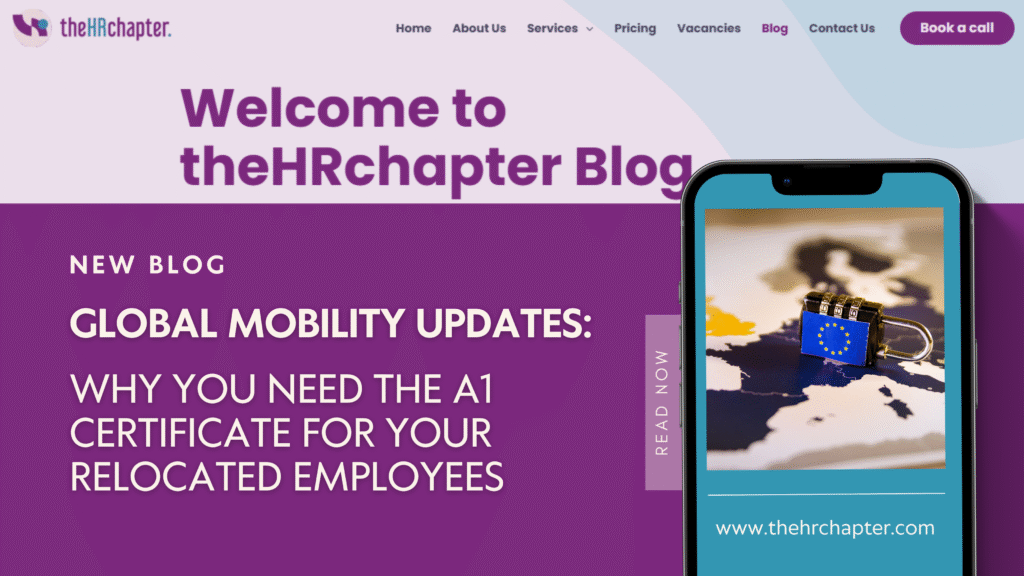Cross-Border Telework: Social Security & Permanent Establishment Considerations

When the pandemic sent us home, many discovered a new kind of freedom: the power to work from anywhere. But while laptops travel easily, the rules for working across borders are far less flexible.
Across the EU, EEA, and Switzerland, the end of temporary COVID measures has left a maze of regulations. Two questions now dominate: Where do social security contributions go? And could a home office create a Permanent Establishment (PE) for your employer?
On social security, there’s progress. Since July 1, 2023, the Multilateral Framework Agreement (MFA) lets employees work up to 49.9% from their home country while staying under the employer’s social security system, a big leap from the old 25% cap. But here’s the challenge: the MFA doesn’t touch tax rules. An employee might be fine for social security yet still trigger personal tax obligations or a PE risk, thanks to stricter national laws and OECD criteria.
In this article, TheHRchapter explores both the opportunities and the risks, and how employers and employees can navigate them together, with clarity and confidence.
The social security shift: from temporary fix to permanent framework
Before 2020, EU rules meant that if an employee worked more than 25% in their country of residence, social security affiliation shifted there. COVID disrupted everything and temporary “no-impact” rules froze those shifts. With those measures expiring in mid-2023, the MFA was born to bring stability.
Key MFA features:
- Threshold: Work 25%–49.9% in your country of residence and keep the employer-country social security coverage. Over 49.9%? Coverage shifts.
- Scope: Only habitual, IT-based telework. No manual work, no “workcations.”
- Eligibility: Both employer’s and employee’s countries must be MFA signatories.
- Consent & Process: Requires mutual agreement and an A1 certificate application from the employer’s country.
- Deadlines: Retroactive application was up to 12 months until June 30, 2024; now it’s only 3 months.
Not all countries signed. Denmark and the UK opted out, so the old 25% rule still applies there. Others, like Italy and Ireland, joined later, so start dates vary.
The Permanent Establishment challenge
While the MFA calms social security waters, tax rules remain choppy. A PE means a foreign company is considered to have a taxable business presence in another country, and must pay corporate tax there.
How a home office could trigger PE:
- At the disposal test: If the home is effectively “the company’s” for example, if there’s no alternative office or remote work is required, risk increases.
- Fixed place of business: The home office is used regularly and structurally for business.
- Dependent agent rule: Even without a physical “place,” if an employee habitually negotiates or concludes contracts, a PE may exist.
During COVID, OECD guidance temporarily advised against counting forced telework toward PE creation. That’s over. Interpretations now vary: Germany is cautious; Denmark can be stricter.
Consequences if PE exists: Corporate tax on profits attributed to the PE, plus administrative burdens like local tax registration and separate accounts.
Two rulebooks, two clocks
If cross-border telework had a soundtrack, it might be two different songs playing at the same time. One is the social security tune, set by the MFA. The other is the tax melody, driven by bilateral treaties.
Both matter, but they run on different rhythms, different measures, and different thresholds.
Two Different Systems at a Glance
| ASPECT | Personal Income Tax (Bilateral Treaty) |
| SOURCE OF RULES | Country-to-country tax treaties |
| MEASUREMENT METHOD | Number of days worked from home in country of residence |
| TYPICAL THRESHOLD | Often 19–40 days/year before income becomes taxable locally |
| TRIGGER FOR CHANGE | Crossing limit shifts taxing rights to country of residence |
| SCOPE | All income-earning work days, regardless of task type |
| GEOGRAPHIC LIMITATION | Applies to the specific treaty between the two countries |
| DOCUMENTATION | Payroll/tax reporting in both countries, if threshold exceeded |
Why the misalignment matters
Let’s say you’re a French resident working for a Belgian employer:
- Under the MFA: You can work two days a week from France (~40%) without shifting your social security.
- Under the France–Belgium tax treaty: You only get 34 days/year before part of your income becomes taxable in France. (Two days/week = ~104 days/year — triple the limit.)
This means you could be fully compliant with social security while breaking tax rules without even knowing it.
Real-world treaty thresholds vs. MFA
| COUNTRY PAIR | PERSONAL INCOME TAX TREATY LIMIT | SOCIAL SECURITY (MFA) THRESHOLD | NOTES / CONDITIONS |
| Netherlands–Germany | 34 days/year (pending ratification) | 49.9% | Day = >30 minutes worked from home |
| Luxembourg–Belgium | 34 days/year | 49.9% | Based on amended treaty |
| Luxembourg–Germany | 19 days/year (moving to 34) | 49.9% | Increase pending ratification |
| Luxembourg–France | 29 days/year (planned 34) | 49.9% | Negotiations ongoing |
| Switzerland–France | 40% of annual time | 49.9% | Applies mainly to border-region workers |
| Switzerland–Italy | 25% of annual time | 49.9% | Border-region specific |
Strategies for employers
If you’re an employer with cross-border teleworkers, you need to play offense, not defense. The best protection is a policy and process framework that builds compliance into everyday operations.
A. Build a clear cross-border telework policy
- Voluntary, not mandatory: The arrangement should be employee-initiated, with an office space always available in the employer’s country. This helps counter the “at the disposal” argument for PE.
- Role-specific limits: High-level decision-makers (executives, senior sales staff) have a higher PE risk, their telework days should be more tightly managed.
- Written agreements: Contracts and telework policies should explicitly note the voluntary nature, available office space, and any maximum telework days or percentages allowed.
B. Proactive social security compliance
- Identify MFA-eligible employees early: If both countries are signatories and work fits the “habitual telework” definition, apply for an A1 certificate.
- Mind the deadlines: Since July 1, 2024, retroactive application is capped at 3 months — missing that window means losing MFA benefits.
- Keep documentation ready: A1 certificates, signed telework agreements, and work schedules are essential in case of audits.
C. Mitigate permanent establishment risk
- Contractual safeguards: No employer control over the home office; no company equipment implying ownership; avoid paying home rent directly.
- Limit strategic functions abroad: Keep core decision-making and contract-signing within the employer’s country when possible.
- Country-specific legal advice: Some jurisdictions (e.g., Denmark) are stricter; tailor your controls accordingly.
D. Track telework days like you track payroll
- Use HR software or integrated timesheet tools to log where each day is worked.
- Set automated alerts if employees approach their bilateral treaty day limit or the MFA percentage threshold.
- Align this data with payroll and tax reporting cycles to catch issues before year-end.
Your goal isn’t just to “follow the rules”, it’s to design a system where breaking them is practically impossible. That means combining legal awareness with operational discipline, and giving both HR and tax teams the same, synchronized telework data.

Cross-border telework: freedom for your people, certainty for your business
Cross-border telework is here to stay! and with it, the dual challenge of navigating social security thresholds, tax treaty day limits, and Permanent Establishment risks. The MFA has brought welcome clarity on one front, but the misalignment with tax rules means compliance still demands vigilance, proactive planning, and country-by-country expertise.
For employers, the real opportunity lies in turning this complexity into a competitive advantage, building trust with employees, avoiding costly surprises, and creating flexible work models that actually work across borders. That requires not just knowing the rules, but building systems that keep you compliant automatically.
At TheHRchapter, we help organizations design cross-border telework policies that are watertight, practical, and tailored to the jurisdictions where you operate. From securing A1 certificates to managing treaty thresholds and mitigating PE risk, our experts make sure your global workforce strategy is as mobile as your people.
Don’t leave compliance to chance. Contact TheHRchapter today and let’s build a cross-border telework framework that gives your team freedom — and your business peace of mind.
Need help with other HR services for your business?
At TheHRchapter, we provide tailored solutions to guide startups and scaleups in choosing and implementing the best tools for hiring, onboarding, payroll, employee management and more.
Core HR Services
- HR Consulting: Provides expert advice on various HR matters, including policies, procedures, and compliance
- HR Services for Startups: Offers tailored solutions for startups, helping them establish a strong HR foundation.
- Payroll Services: Manages payroll processing, tax filings, and employee benefits.
Let us help you streamline your HR processes and achieve your business goals. Contact us today to get started!
Related Reads: Check out these other Articles!
The Strategic Role of HR in Mergers and Acquisitions: Driving Smooth Transitions and Employee Alignment
The Strategic Role of HR in Mergers and Acquisitions: Driving Smooth Transitions and Employee Alignment…
HR’s Essential Role in Compliance and Due Diligence During Mergers
HR’s Essential Role in Compliance and Due Diligence During Mergers When we talk about mergers…
AI in Business Transformation: Moving Beyond the As-Is to the To-Be
AI in Business Transformation: Moving Beyond the As-Is to the To-Be Change is never easy….


